Characterisation of leukocytes in a human skin blister model of acute inflammation and resolution
- PMID: 24603711
- PMCID: PMC3945731
- DOI: 10.1371/journal.pone.0089375
Characterisation of leukocytes in a human skin blister model of acute inflammation and resolution
Abstract
There is an increasing need to understand the leukocytes and soluble mediators that drive acute inflammation and bring about its resolution in humans. We therefore carried out an extensive characterisation of the cantharidin skin blister model in healthy male volunteers. A novel fluorescence staining protocol was designed and implemented, which facilitated the identification of cell populations by flow cytometry. We observed that at the onset phase, 24 h after blister formation, the predominant cells were CD16hi/CD66b+ PMNs followed by HLA-DR+/CD14+ monocytes/macrophages, CD11c+ and CD141+ dendritic cells as well as Siglec-8+ eosinophils. CD3+ T cells, CD19+ B cells and CD56+ NK cells were also present, but in comparatively fewer numbers. During resolution, 72 h following blister induction, numbers of PMNs declined whilst the numbers of monocyte/macrophages remain unchanged, though they upregulated expression of CD16 and CD163. In contrast, the overall numbers of dendritic cells and Siglec-8+ eosinophils increased. Post hoc analysis of these data revealed that of the inflammatory cytokines measured, TNF-α but not IL-1β or IL-8 correlated with increased PMN numbers at the onset. Volunteers with the greatest PMN infiltration at onset displayed the fastest clearance rates for these cells at resolution. Collectively, these data provide insight into the cells that occupy acute resolving blister in humans, the soluble mediators that may control their influx as well as the phenotype of mononuclear phagocytes that predominate the resolution phase. Further use of this model will improve our understanding of the evolution and resolution of inflammation in humans, how defects in these over-lapping pathways may contribute to the variability in disease longevity/chronicity, and lends itself to the screen of putative anti-inflammatory or pro-resolution therapies.
Conflict of interest statement
Figures

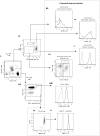

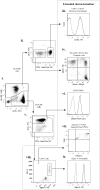

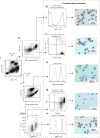

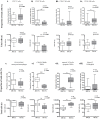
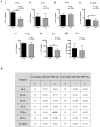


References
-
- Lawrence T, Willoughby DA, Gilroy DW (2002) Anti-inflammatory lipid mediators and insights into the resolution of inflammation. Nature reviews Immunology 2: 787–795. - PubMed
-
- Vane JR, Botting RM (1995) New insights into the mode of action of anti-inflammatory drugs. Inflammation research : official journal of the European Histamine Research Society [et al] 44: 1–10. - PubMed
-
- Serhan CN, Savill J (2005) Resolution of inflammation: the beginning programs the end. Nature immunology 6: 1191–1197. - PubMed
-
- Colville-Nash P, Lawrence T (2003) Air-pouch models of inflammation and modifications for the study of granuloma-mediated cartilage degradation. Methods in molecular biology 225: 181–189. - PubMed
-
- Gabor M (2003) Models of acute inflammation in the ear. Methods in molecular biology 225: 129–137. - PubMed
Publication types
MeSH terms
Substances
Grants and funding
LinkOut - more resources
Full Text Sources
Other Literature Sources
Research Materials

